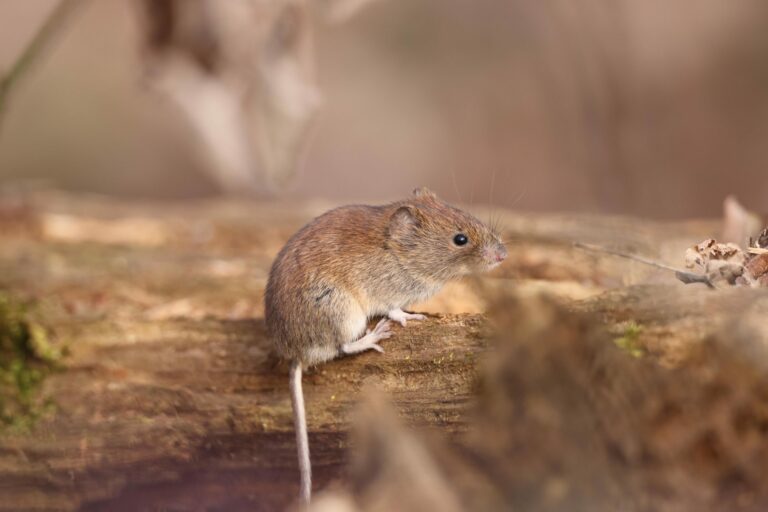Myodes glareolus

The bank vole can weigh up to 35 g and reach a head-body length of 80-115 mm, with a tail length of 40-50 mm. Its fur on the back is reddish-brown, while the belly is white to grayish. Myodes glareolus is found in forests, forest edges, slopes, and even in park areas. This species is primarily crepuscular and nocturnal. Nests are built both above and below ground, taking a spherical shape with a diameter of up to 10 cm. The mating period lasts from March to October, during which up to four litters of 2-8 young can be born. The juveniles become independent after approximately 30 days. Bank voles can live up to three years (Wenk 2007).
Diet: Bank voles feed on plant materials such as bark, buds, seeds, roots, tubers, and kernels, as well as insects. When food is abundant, they store reserves (Wenk 2007).
Conservation status: The bank vole is classified as “least concern” according to the IUCN Red List of Threatened Species and the Red List of Germany.
-
Wenk, M (2007)Mäuse (Muridae). In: Ministerium für Ländliche Entwicklung, Umwelt und Verbraucherschutz des Landes Brandenburg (Waldschutz-Merkblatt 53).